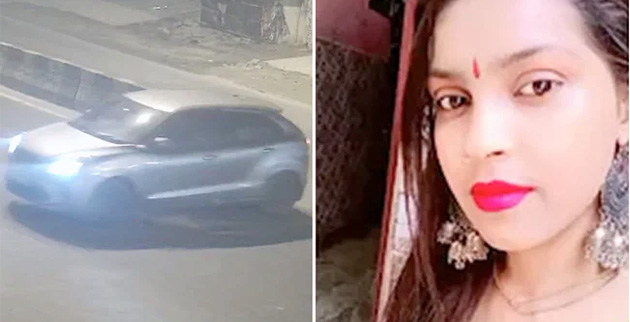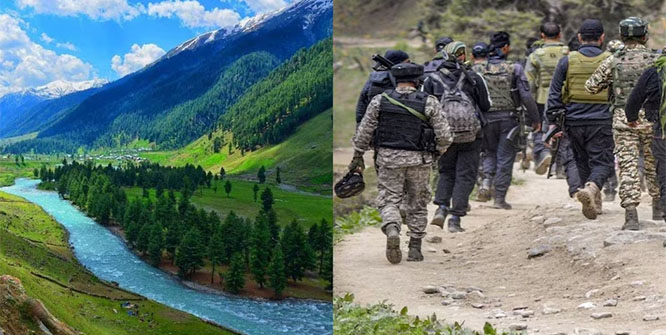
In the early hours of Sunday, January 1, while most were ringing in the new year in Delhi, a woman's body was found abandoned on the side of the road with no clothes. The 20-year-old, teh sole breadwinner of her family, was returning home on a scooter when her vehicle was hit by a car. The occupants of the car in, what seems to be an attempt to flee, drove away with the woman's body stuck in the wheels dragged with the car for nearly 12 km from Sultanpuri to Kanjhawala.
The gruesome nature of the incident led to a political slugfest in the nation's capital with fingers being pointed at the Delhi police, and protests by the kin of the victim and AAP over shoddy work by teh law enforcement in the case. Parallels were even drawn to the 2012 Nirbhaya case that remained fresh in public memory a decade since the horrific gang-rape took place.
Here is all that has happened so far in the Delhi hit-and-run case.
Drunk driving, body trapped under borrowed car - What the FIR says
As per the FIR filed by the police, the men who were involved in the accident confessed to being drunk. Further, NDTV reported that according to the FIR, the woman's body was tangled in the undercarriage of the car after she fell from her two-wheeler and the men had already driven nearly 12 km before they were aware of the same.
The five people in the car were Amit and Deepak Khanna, Manoj Mittal, a local BJP leader who has a ration shop, Krishan, an employee at the Spanish Cultural Centre in Connaught Place and Mithun, a hairdresser.
The FIR notes that the police tried to track down the owner of the vehicle, at which time, they found out that it was owned by an individual named Lokesh, who had lent to someone called Ashutosh, who in turn had given it to his friends - the Khannas, who were present in the vehicle at the time of the accident.
A Delhi court sent all five of the accused to three-day police custody while officers investigate the matter.
All five have been named under IPC sections 279 (rash driving) and 304-A (causing death by negligence) over the accident.
Removed body and fled
Those in the car described how the accident went down.
"They said they were going on a narrow lane and a girl, approaching on her scooter, met with an accident. Since no one raised an alarm, they kept driving. It was later they realised that something was stuck in the car wheel and saw a woman’s body after driving for a few kilometres. They removed the body from the car and fled from the scene," an official familiar with th investigation told The Times of India.
Pillion rider was friend, fled scene of accident
Police investigation also showed that there were two girls on the scooty on the night of the accident. The pillion rider reportedly sustained minor injuries and allegedly fled the scene because she was afraid. Police have tracked her down, and her statement is being taken.
Where were the police? An eyewitness speaks out
Deepak Dahiya, the owner of a dairy shop in Ladpur village, northwest Delhi, recounted his version of events on the night of the accident.
"I heard a car’s noise, and initially it sounded like it’s tyre had burst, but it was still being driven. It was going at the speed of barely 20km per hour, so I could clearly see what was happened. That’s when I saw the body of a girl beneath the car -- between the two left side tyres," he said, speaking to Hindustan Times.
He placed a call to the police control room but was asked to call back in some time.
"I told them that there were about four-five people in the car, and that I wasn’t sure how dangerous they could be. I thought I will follow them, but not stop them," he added.
The individual began his pursuit in an electric vehicle.
"As I started going after them, I realised they were driving very slow, and the body was still attached to the car. It’s difficult to believe that they didn’t know there was something beneath their car. Meanwhile, I was giving almost minute-by-minute updates to the police. I would have called them 18-20 times in the next 45 minutes, of which one call lasted more than 10 minutes," he continued.
During the pursuit, at one point, Dahiya realized that the body was no longer attached to the car. As the grey Baleno headed towards Begumpur, Dahiya continued following it and saw two PCR vans on the way, but they didn't take any action suggesting Dahiya's calls had not been communicated to them. In Begumpur, Dahiya told officials in a third PCR van what he had seen but they let the vehicle go after initially flagging it, and speaking with the drivers.
"Within minutes of returning to the shop, I saw police and some people on the road rushing to the same stretch I had seen those men driving the Baleno with the body earlier. I followed the police, which led me to the spot where another police team had found the body on the road. I then returned home," he said, adding, "There is little that the police did despite calling them several times. I was following the car right from the start. If police were active the culprits would have been caught from the spot. I have a recording of my conversation with police control room officials."
Police provide their justifications
Special commissioner of police Dependra Pathak confirmed that Dahiya made the calls which helped them track down the vehicle. He added that the incident with the third PCR van would be probed.
The police probe has shown that the vehicle was able to avoid two permanent police pickets because they were on the other side of the carriageway and since the car was travelling at a steady speed of 40-50 kmph, they didn't raise any suspicion. Deepak, who was at the wheel, was familiar with the routes as well as police presence, and therefore managed to drive around for 90 minutes.
The police are going to submit their findings in the report by December 3 evening.
Girl's family suspects rape and murder
While the police have investigated the accident, the girl's mother alleged that she was raped and killed.
"My daughter was wearing an inner, a T-shirt, a jacket and pants. How come not a single cloth was found on her body? I heard that her bones were visible and legs were gone. The culprits dumped her body and left," Times of India reported her mother alleging.
Her uncle added, "The condition of the body shows she was sexually assaulted. We want proper investigation in the matter and justice for our daughter."







Comments
Add new comment